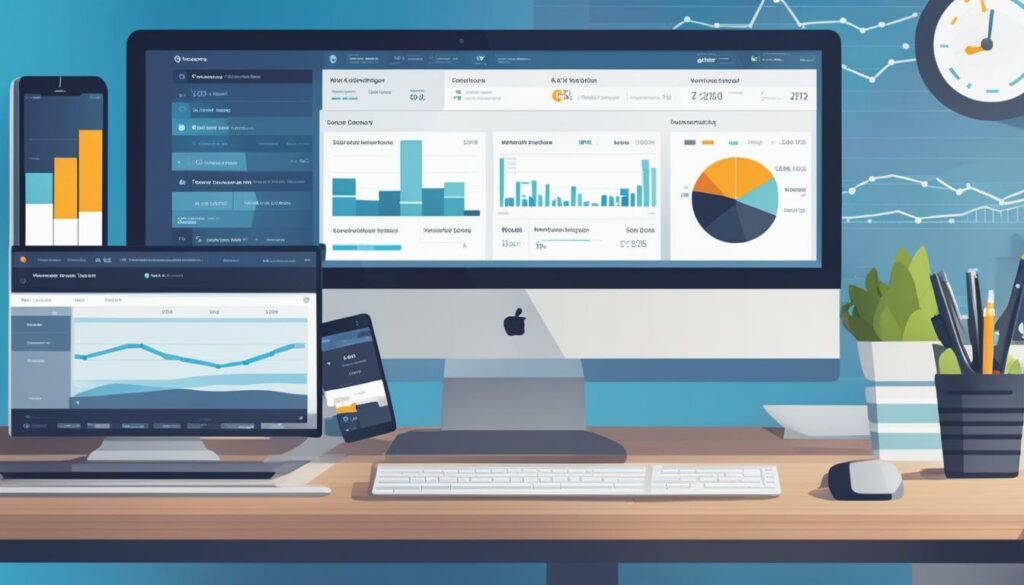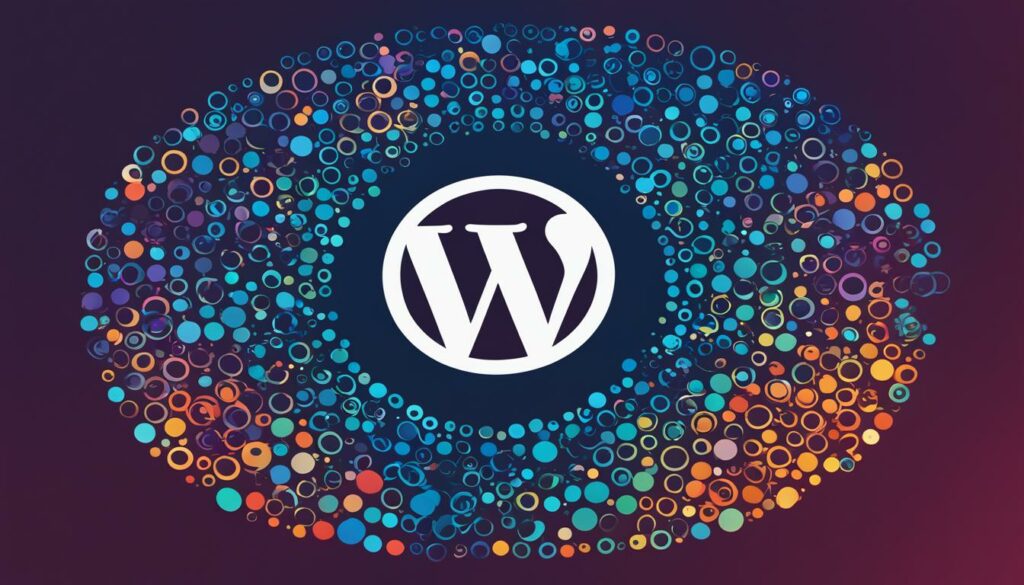Welcome to the world of WordPress design! As a website owner, you understand the importance of a well-designed and user-friendly website. In this article, we will explore the process of integrating APIs with WordPress, and how it can significantly enhance your website’s user experience and functionality.
When it comes to WordPress UX design, it’s essential to leverage the power of APIs to extend the capabilities of your website. APIs, or Application Programmable Interfaces, allow your WordPress site to connect with external applications and exchange data seamlessly. By integrating APIs, you can unlock a world of possibilities, from fetching data from external sources to creating headless websites that can distribute content across various platforms.
Now, you might be wondering how to go about integrating APIs with WordPress. While it can be a complex task, seeking help from a professional WordPress design agency can make the process smooth and hassle-free. These agencies specialize in WordPress website design and offer expert services to ensure seamless API integration.
One recommended tool for API integration with WordPress is the WPGetAPI plugin. This plugin allows WordPress developers to seamlessly integrate third-party APIs without the need for extensive coding knowledge. It supports both GET and POST data requests and offers a range of advantages, such as automating content display, converting data formats, and supporting various authentication mechanisms.
Key Takeaways:
- Integrating APIs with WordPress can greatly enhance the user experience and functionality of your website.
- Seeking help from a professional WordPress design agency can make the API integration process seamless.
- The WPGetAPI plugin is a recommended tool for integrating third-party APIs with WordPress.
- This plugin offers advantages such as automating content display and supporting different authentication mechanisms.
- API integration with WordPress can unlock a range of possibilities, from streamlining business operations to creating headless websites.
What is an API and its Benefits for WordPress?
An API, or Application Programmable Interface, allows websites or software to connect with other applications and exchange data. Integrating APIs with WordPress offers several benefits for your website:
- Enhanced Look and Appeal: APIs enable you to incorporate dynamic content, widgets, and features that can elevate the visual design and user experience of your WordPress website. Whether it’s displaying real-time data or integrating interactive maps, APIs can help you create a visually stunning and engaging website.
- Streamlined Business Operations: By integrating REST APIs into your WordPress site, you can seamlessly fetch data from external sources. This means you can automate important processes such as inventory management, customer data synchronization, or displaying real-time data like stock prices on your website. This streamlining of operations can save time and improve efficiency.
- Creation of Headless Websites: APIs open the possibility of creating headless websites with WordPress. A headless architecture allows you to decouple the content management system from the presentation layer, giving you the freedom to display your WordPress content on various channels like mobile apps, smart devices, or even other websites.
By leveraging APIs, you can take your WordPress website to the next level by enhancing its design, improving its functionality, and interacting with external data sources.
Using the WPGetAPI Plugin for API Integration
If you’re looking to integrate third-party APIs with your WordPress website, the WPGetAPI plugin is a valuable tool to consider. Whether you’re a seasoned developer or just starting with WordPress, this plugin offers a user-friendly way to embed APIs without writing any code. With its ability to handle both GET and POST data requests, the WPGetAPI plugin provides a seamless integration experience. Let’s explore some of the key advantages it offers:
- Automating content display: The WPGetAPI plugin allows you to automate the display of content fetched from external sources. This means you can easily enrich your website with dynamic data that enhances the user experience.
- Converting data into various formats: The plugin enables you to convert fetched data into different formats such as JSON, XML, or HTML. This flexibility empowers you to customize how the content is presented on your WordPress site.
- Sending data from WPForms: WPGetAPI seamlessly integrates with WPForms, a popular WordPress form plugin. You can use it to send form data to external APIs, opening up possibilities for advanced form submissions and data processing.
- Working seamlessly with shortcodes: Shortcodes are a powerful feature of WordPress, and the WPGetAPI plugin fully supports them. You can easily incorporate fetched data into your WordPress content using shortcodes, making it effortless to display API-driven content wherever you choose.
- Supporting different authentication mechanisms: APIs often require authentication to access their data. With the WPGetAPI plugin, you can easily handle authentication mechanisms such as API keys or OAuth, ensuring secure and authorized data retrieval.
If you want to experience the benefits of API integration without the complexities of coding, the WPGetAPI plugin is an excellent choice. It streamlines the process of embedding third-party APIs into your WordPress website, allowing you to enhance the user experience, automate content display, and unlock the full potential of API-driven functionality.
Configuring the WPGetAPI Plugin
To successfully configure the WPGetAPI plugin, follow these steps:
Step 1: Install and Activate the Plugin
Begin by installing and activating the WPGetAPI plugin on your WordPress website. You can find the plugin in the WordPress plugin repository or by searching for it in the Plugins section of your WordPress dashboard.
Step 2: Choose an API to Integrate
Once the WPGetAPI plugin is activated, you can select the API you want to integrate. For example, you can choose the Quotable API to display random quotes on your website. Consider your website’s needs and explore the available APIs to find the most suitable one.
Step 3: Fill in the API Details
After choosing an API, access the WPGetAPI plugin interface and fill in the relevant details. This includes the API name, unique ID, and base URL. These details are necessary for the plugin to connect your WordPress website with the chosen API and retrieve the desired data.
Step 4: Understand the API Documentation
It is essential to familiarize yourself with the API documentation to properly configure the endpoint. The documentation provides valuable information on how to structure API requests, required parameters, and available data formats. Reviewing the documentation will ensure your integration with the API is smooth and error-free.
| API Name | Unique ID | Base URL |
|---|---|---|
| Quotable API | qw1784 | https://api.quotable.io |

By appropriately configuring the WPGetAPI plugin, you can seamlessly integrate your WordPress website with the chosen API. It opens up a world of possibilities for enhancing your website’s functionality and providing a better user experience. If you require professional assistance in configuring the WPGetAPI plugin or any other WordPress-related services, consider reaching out to a reliable WordPress development agency like Positiwise Software Pvt Ltd. Their expertise in WordPress maintenance and support services can ensure the smooth operation of your website.
Testing the API Integration
Once you have configured the endpoint for API integration using the WPGetAPI plugin, it’s crucial to test the integration to ensure that everything is functioning correctly. The WPGetAPI plugin provides a convenient built-in testing mechanism that allows you to verify the data retrieved from the API.
To initiate the testing process, simply click on the “Test Endpoint” button provided by the plugin. This will trigger the plugin to send a request to the API and fetch the corresponding data.
Upon completion of the test, the WPGetAPI plugin will display the results, giving you valuable insights into the retrieved data. This testing phase serves as a crucial step to validate the integration and ensure that the API is working as expected.
Testing the API integration using the WPGetAPI plugin allows you to verify that the data is correctly fetched from the external source and successfully integrated into your WordPress website. It provides peace of mind, knowing that the integration is functioning properly before moving forward with the website’s development or launch.

By thoroughly testing the API integration, you can identify and address any potential issues or discrepancies, ensuring a seamless and optimized user experience for your website visitors. Whether you are a WordPress design agency or an individual seeking WordPress custom design, reliable API integration is essential to deliver a high-quality website.
Displaying Fetched Data on the Website
Once you have successfully integrated APIs with your WordPress website using the WPGetAPI plugin, you can now focus on displaying the fetched data in a visually appealing manner. The WPGetAPI plugin offers two methods for accomplishing this: the Template Tag method and the Shortcode method.
The Template Tag method requires some knowledge of PHP and involves declaring a variable to store the fetched data. This method provides more flexibility and allows you to format the data according to your specific design needs. You can use conditional statements and loops to manipulate the data and display it in a visually customized way.
On the other hand, if you are not familiar with PHP, you can opt for the Shortcode method. This method does not require any PHP knowledge and allows you to directly convert the API data format to HTML for display on your website. Simply create a shortcode using the WPGetAPI plugin and insert it into your desired page or post.
Whether you choose the Template Tag method or the Shortcode method, the WPGetAPI plugin provides you with the flexibility to display the fetched data in a way that suits your WordPress responsive design and theme design preferences. Let’s take a look at a visual representation of these methods:
| Method | Description |
|---|---|
| Template Tag | Requires PHP knowledge. Allows for customization and manipulation of the fetched data. |
| Shortcode | No PHP knowledge required. Directly converts the API data format to HTML for display on the website. |
By leveraging these display methods, you can seamlessly integrate the fetched data into your website, providing a consistent and user-friendly experience for your visitors. Experiment with different design elements and formatting options to create a WordPress responsive design that aligns with your brand and engages your audience.
The Role of a WordPress Development Agency
For seamless API integration and expert guidance, it is recommended to partner with a trusted WordPress development agency. These agencies have experienced developers who specialize in WordPress and can efficiently embed APIs, test them, and display data on the website. Choosing a reputable agency like Positiwise Software Pvt Ltd can ensure a top-notch website with all the necessary functionalities.
Benefits of Working with a WordPress Development Agency
When you collaborate with a WordPress design agency, you gain access to a team of skilled professionals who are well-versed in WordPress development. These agencies have in-depth knowledge of the platform’s coding structure, security best practices, and the latest industry trends. By leveraging their expertise, you can benefit from:
- Efficient API integration: WordPress development agencies have expertise in integrating APIs seamlessly into your website, ensuring smooth functionality and minimal downtime.
- Expert guidance: The experienced developers at these agencies can provide valuable insights and recommendations for maximizing the capabilities of your website.
- Quality assurance: WordPress development agencies conduct thorough testing to ensure that the API integration works flawlessly on your website, providing a seamless user experience.
- Custom solutions: These agencies can tailor the API integration to meet your specific business requirements, allowing for a highly personalized and unique website experience.
By partnering with a reputable agency like Positiwise Software Pvt Ltd, you can tap into their expertise and experience a hassle-free API integration process. Their team of WordPress development experts can handle all aspects of the integration, from configuration to testing and displaying the fetched data on your website.
| Reasons to Choose a WordPress Development Agency | Positiwise Software Pvt Ltd |
|---|---|
| Expert developers specialized in WordPress | ✓ |
| Proven track record in successful API integrations | ✓ |
| Efficient testing and quality assurance processes | ✓ |
| Customized solutions tailored to your business | ✓ |
By entrusting your API integration to a WordPress development agency, you can ensure a smooth and successful integration that enhances the functionality and user experience of your website. Collaborating with Positiwise Software Pvt Ltd, a leading WordPress design agency, will provide you with a top-quality website that meets your business needs and stands out in the digital landscape.

Understanding the WordPress REST API
The WordPress REST API is a powerful interface that allows external applications to seamlessly access data and functionality from the WordPress CMS. By following the REST guidelines, this API enables developers to connect WordPress with other software and websites, opening up a world of possibilities for website customization and integration.
Why the WordPress REST API is Transformative
The introduction of the WordPress REST API has revolutionized the platform, expanding its capabilities beyond being just a content management system. With the REST API, developers can now build web-based single-page applications that leverage the power of WordPress. This enables the creation of interactive and dynamic websites that can work in harmony with various programming languages like JavaScript, PHP, and more.
The WordPress REST API offers a standardized and efficient way to access and manipulate WordPress data. Its flexibility and scalability make it a go-to choice for developers looking to extend the functionality of WordPress or build custom web applications.
Whether you want to integrate WordPress with other applications, build a mobile app that connects to your WordPress website, or work with different programming languages, the WordPress REST API provides a robust solution that empowers developers to create unique and powerful applications.
Benefits of the WordPress REST API
Here are some key advantages of using the WordPress REST API:
- Enables seamless integration with external applications and services
- Offers flexibility for building custom web applications
- Allows data retrieval, modification, and creation using standardized endpoints
- Supports different programming languages, enhancing developer productivity
With its user-friendly architecture and cross-platform compatibility, the WordPress REST API streamlines the development process and provides developers with the tools they need to create cutting-edge websites and applications.
Examples of WordPress REST API Usage
The WordPress REST API has a wide range of applications, including:
- Fetching post content from WordPress and displaying it in a custom web application.
- Creating a mobile app that connects to a WordPress website and offers a seamless browsing experience.
- Building real-time web applications by leveraging the WordPress REST API as the backend.
These examples illustrate the versatility and power of the WordPress REST API, giving developers the ability to create innovative solutions tailored to their specific needs.
The WordPress REST API has opened new doors for developers, allowing them to transform WordPress into a dynamic and interactive application platform. With its ability to connect WordPress with different software and websites, the REST API empowers developers to build incredible web experiences that were once unimaginable.
Developers proficient in JavaScript and PHP can take full advantage of the WordPress REST API’s capabilities and unleash their creativity to create exceptional websites and applications.
WordPress REST API Comparison
| Feature | WordPress REST API | Traditional WordPress |
|---|---|---|
| Support for multiple programming languages | Yes | No |
| Ability to create custom endpoints | Yes | No |
| Integration with external applications | Yes | No |
| Support for single-page applications | Yes | No |
The table above highlights some key differences between the WordPress REST API and traditional WordPress. The REST API’s support for multiple programming languages, ability to create custom endpoints, and seamless integration with external applications sets it apart from the more limited capabilities of the traditional WordPress CMS.
By embracing the power of the WordPress REST API, developers can unlock new horizons in web development and create immersive online experiences that captivate and engage users.
WordPress REST API Examples
The WordPress REST API offers developers versatility and countless possibilities for integrating WordPress with various applications. Here are a few examples of how you can leverage the WordPress REST API in your projects:
Publishing WordPress Post Content on a Custom Web Application
With the WordPress REST API, you can easily retrieve post content from your WordPress website and publish it on a custom web application. This allows you to create engaging experiences for your users beyond the confines of your WordPress site. Simply make a request to the API endpoint for the desired post, and you’ll receive the necessary data to display it on your web application.
Connecting WordPress with a Mobile App
The WordPress REST API enables seamless integration between your WordPress website and a mobile app. Whether you’re building an iOS or Android app, you can use the API to fetch data, such as blog posts, user profiles, or even comments, and display it within your mobile application. This allows you to create a unified experience for your audience across different platforms.
Building Powerful and Customized Applications on Top of WordPress
The flexibility, scalability, and ease of implementation provided by the WordPress REST API empower developers to build powerful and customized applications on top of the WordPress platform. Whether you’re looking to create a complex web application or an interactive plugin, the REST API opens up a world of possibilities. Seamlessly integrate data from your WordPress website, manipulate it, and present it in unique and innovative ways to meet your specific requirements.
By utilizing the WordPress REST API, you can expand the functionality of your WordPress website, connect it with other applications, and create a seamless user experience across different platforms and devices. Whether you’re a developer working on a custom web application or building a mobile app, the WordPress REST API provides the tools and flexibility you need to bring your ideas to life.
When to Use the WordPress REST API
The WordPress REST API provides developers with the ability to integrate WordPress with other applications, build custom web applications that leverage WordPress features, and work with different programming languages like JavaScript and PHP. This powerful API allows you to access and manipulate WordPress data in a standardized and efficient manner.
Integrating WordPress with other applications: The WordPress REST API enables you to seamlessly connect your WordPress website with external applications. Whether you want to fetch content from WordPress and display it in a custom web application or synchronize data between WordPress and another platform, the REST API makes it possible.
Building custom web applications: With the WordPress REST API, you can create web applications that take advantage of the rich features and functionalities offered by WordPress. Whether you’re building an interactive portfolio website, an e-commerce platform, or a membership site, the REST API empowers you to leverage the power of WordPress.
Working with different programming languages: The WordPress REST API opens up possibilities for developers who prefer working with programming languages like JavaScript and PHP. By providing a standardized interface to access WordPress data, the REST API allows developers to utilize their preferred programming languages and frameworks to build robust and scalable applications.
Whether you want to integrate WordPress with other applications, build custom web applications, or work with different programming languages, the WordPress REST API offers a flexible and powerful solution. By harnessing the capabilities of this API, you can unlock the full potential of WordPress in your development projects.
Conclusion
Integrating APIs with WordPress using the WPGetAPI plugin and leveraging the WordPress REST API can greatly enhance the user experience and functionality of your WordPress website. By seamlessly connecting with external applications, you can automate processes, fetch data in real-time, and provide a more dynamic and personalized website for your users.
With the ability to customize the look and feel of your website, you can ensure a unique and visually appealing design that aligns with your brand. The integration of APIs also opens up possibilities for creating powerful web applications that can perform complex operations and deliver richer content to your audience.
Partnering with a reputable WordPress design agency like Positiwise Software Pvt Ltd can make the API integration process easier and more efficient. Their team of experienced WordPress developers can guide you through every step, from API selection and configuration to testing and displaying the fetched data. With their expertise, you can ensure a successful integration, optimized performance, and a top-notch website that meets your business goals.
FAQ
Q: What are the benefits of integrating APIs with WordPress?
A: Integrating APIs with WordPress can enhance the look and appeal of your website, streamline business operations by fetching data from external sources, and enable the creation of headless websites that can surface content across multiple channels.
Q: How can I seamlessly integrate APIs with WordPress?
A: If you are a WordPress developer, you can learn to integrate APIs with WordPress using the WPGetAPI plugin. This plugin allows you to embed APIs without writing any code and supports both GET and POST data requests.
Q: How do I configure the WPGetAPI plugin for API integration?
A: To configure the WPGetAPI plugin, you need to install and activate it on your WordPress website. You can choose from a range of APIs to integrate, such as Quotable API. The plugin interface allows you to fill in the details of the chosen API, including the API name, unique ID, and base URL.
Q: How can I test the API integration using the WPGetAPI plugin?
A: The WPGetAPI plugin provides a built-in testing mechanism for API integration. After configuring the endpoint, you can use the Test Endpoint button to initiate the testing process. The plugin will display the results, allowing you to see the data retrieved from the API and ensuring that the integration is functioning correctly.
Q: What methods can I use to display fetched data on my website using the WPGetAPI plugin?
A: The WPGetAPI plugin offers two methods for displaying fetched data on the website: Template Tag and Shortcode. The Template Tag method requires PHP knowledge and involves declaring a variable to store the fetched data. The Shortcode method, on the other hand, does not require PHP knowledge but requires converting the API data format to HTML for display on the page.
Q: What is the role of a WordPress development agency in API integration?
A: WordPress development agencies have experienced developers who specialize in WordPress and can efficiently embed APIs, test them, and display data on the website. Partnering with a trusted agency like Positiwise Software Pvt Ltd can ensure a successful API integration and a top-notch website with all the necessary functionalities.
Q: What is the WordPress REST API and its use cases?
A: The WordPress REST API is an interface that allows external applications to access the data and functionality of the WordPress CMS. It can be used to fetch post content from WordPress and publish it on a custom web application, connect WordPress with a mobile app, or work with different programming languages like JavaScript. It provides developers with flexibility, scalability, and ease of implementation.
Q: When should I use the WordPress REST API?
A: The WordPress REST API is useful when you want to integrate WordPress with other applications, build custom web applications that utilize WordPress features, or work with different programming languages like JavaScript. It provides developers with the ability to access and manipulate WordPress data in a standardized and efficient manner.












